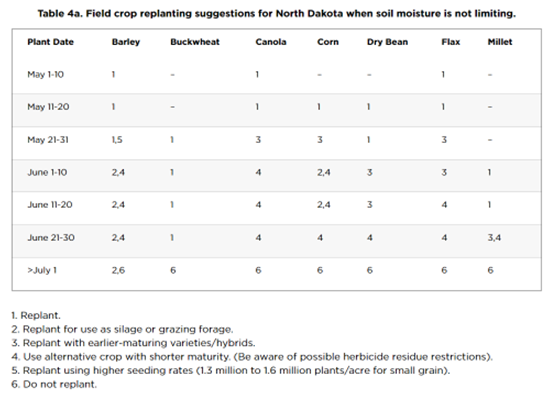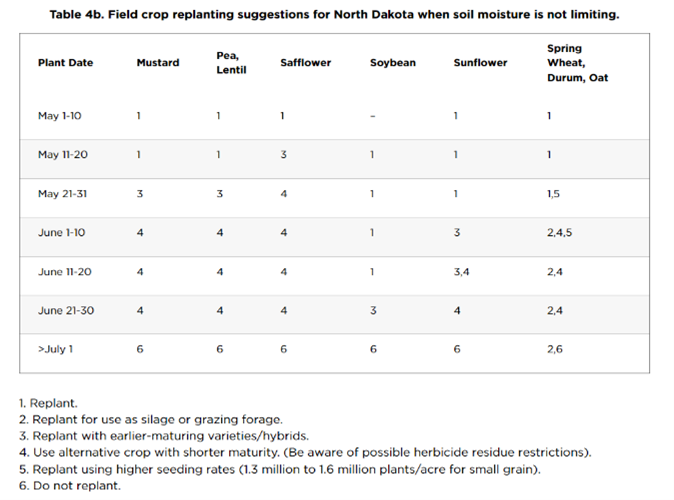Late Season Planting

The reality of seeding or planting any crop into June is that yield penalties will occur. This could be due to reduced bushel weight, small seed size, and low quality grain as a result of early fall frost or poor environmental conditions leading up to maturity.
Planting corn or sunflowers beyond May 30th is still a possibility in 2022, but hybrid selection is of utmost importance, since we have already missed out on 250 crop heat units or more, depending on location. Sunflowers require 115 – 130 days to mature in Manitoba, with the varieties we currently have available. So, a sunflower crop that is planted on June 1st, will mature by September 24th, at the earliest.
Sunflowers are a great option in a wet year, if you can get them planted. They are one of the top water-users that we grow in Manitoba, only behind corn and roughly tied with soybeans. They are very well adapted to dry growing seasons as well because they will search much further for water sources than other crops.
The following tables are taken directly from a NDSU Extension article, “Replanting or Late Planting Crops”: https://www.ndsu.edu/agriculture/ag-hub/publications/replanting-or-late-planting-crops. Note that the majority of North Dakota accumulates several more crop heat units than Manitoba, even at our most southern locations, but these tables do depict a good indication of what a farmer is looking at for yield loss when planting into June.
The data provided here is very cautious and simply states that anything grown after May has very little chance of being economical, which isn’t completely true, but it does encourage the fact that a farmer does have to be wary of what is being seeded after that point. The risks involved are obvious and great care must be taken in order to get any late seeded or planted crop to germinate as quickly as possible and off to a healthy start. It is not unheard of to have a crop emerge within just a few short days of planting when soils are warm and have good moisture, and the quicker that crop gets growing, the more water it will start using. Take great care in placing seed accurately in the soil, control weeds and fertilize accordingly to mitigate any early season stresses.



